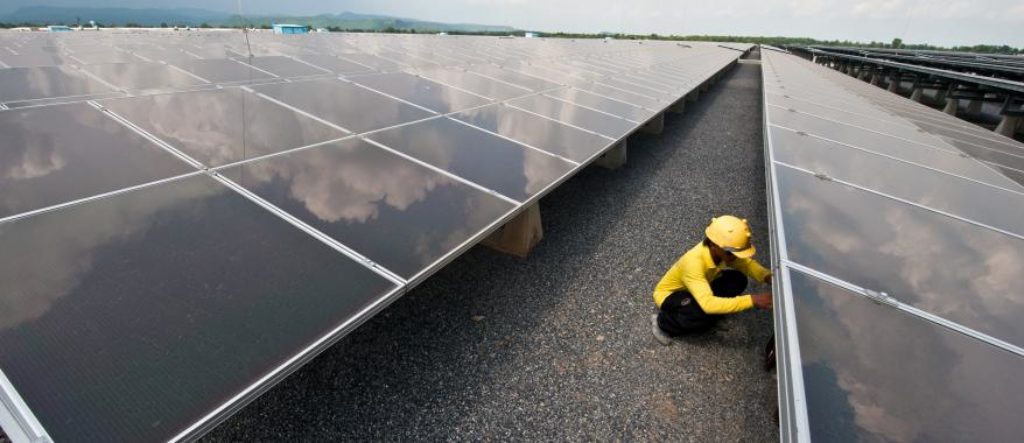This issue brief, the fourth in Stimson’s “Letters from the Mekong” series, explores the shifting terrain for power sector development in the Greater Mekong Subregion (GMS), analyzing hydropower within the context of a broader range of emerging factors and opportunities that could lead to a transformation in the way that Mekong countries approach energy security, regional electricity trade, and sustainable development. This transition, if effectively implemented, could lead to substantive economic gains and significantly reduce ecological, socioeconomic, and political risks in the Mekong Basin.
In the coming years, new GMS hydropower projects will be competing with ever-cheaper options, including both more competitive natural gas prices as well as increasingly affordable and efficient solar and wind technologies. To provide perspective, in the United States the average cost per unit for solar and wind fell 85% and 65% respectively between 2009 and 2016. Between 2015-2016 alone, the global average price of solar dropped 13% and wind dropped 10.75%. In 2016, the record low price for solar power production was broken three times with a solar farm in Abu Dhabi taking the record in September at US$0.0242 c/kWh. Prices for non-hydropower renewables are falling at a rate far faster than anticipated.
There is growing anecdotal evidence that GMS hydropower projects currently in the prefeasibility study phase will be less economically competitive in the long-run. The price point of Mekong basin hydropower is changing: while authorities in Laos and Cambodia often suggest that hydropower is cheap at a price of US$ 0.06 to 0.07 c/kWh, the reality is that new projects will likely be more expensive. Lower Sesan 2 in Cambodia sells at US$ 0.091 c/kWh, and new projects in Laos around US$ 0.08 c/kWh. New projects are often more remote and technically challenging, and therefore require additional transmission line buildout as well as better and more expensive mitigation due to rising standards from investors and increasing regulatory control.
Other factors suggest a coming sea change in GMS energy planning. Rising recognition of climate change impacts, Mekong countries’ commitments under the Paris Agreement, and rising environmental movements all pose a challenge to the status quo dominance of coal and hydropower. The recent suspension of hydropower projects in Myanmar, coal projects in Thailand, and nuclear projects in Vietnam are early signals that the traditional approach to energy sector planning is growing riskier. The market itself is also changing as regional electricity infrastructure is slowly built out and cross-border electricity trade increases. Myanmar and China will also likely emerge as robust net power exporters in the region. Myanmar has five times the hydropower potential as Laos and could emerge as a power trade hub for both Southeast and South Asia. China’s current excess hydropower capacity in Yunnan province is more than the combined current installed hydropower capacity of the rest of the GMS, and China’s grid operators are looking for ways to export this power to GMS markets.
The region can reap substantive efficiency gains from robust power trade, but exporting excess power capacity from Yunnan to markets in Bangkok, Ho Chi Minh City, or Phnom Penh could also deliver sustainability benefits by reducing the need for future dams in the Lower Mekong in the medium and long term. Additionally, non-hydropower renewables can be plugged into the regional power market to tamp down excessive power reserve requirements persistent throughout the GMS. The promotion of energy interdependence and GMS power trade has long been scoped by the Asian Development Bank (ADB), which estimated in 2010 that the economic and environmental benefits of regional energy integration would deliver savings of 19% of total energy consumption, approximately $200bn. The savings resulting from interconnecting existing GMS power systems alone are estimated at $14.3bn. This study was conducted without consideration of the renewable energy revolution occurring today, which suggests even more savings and efficiency gains are within reach. New innovations in high-voltage transmission and distributed power generation could pave the way to this transition, and the ADB or China’s new Asian Infrastructure Investment Bank could serve as catalytic actors bring an integrated GMS power market to light.
Our team’s extensive engagement and analysis with policy-makers, project developers, investors, academic experts, and civil society groups have revealed continuously rising political risks and economic costs to traditional infrastructure approaches. Today, the renewable energy transition and regional power market development are changing the global power landscape at a rapid rate. However, few governments in the Mekong basin are seriously considering these emerging opportunities or the ways that supply and demand shifts may impact the national electricity market. National power plans continue to be built around traditional models of point-to-point production and transmission from large, centralized coal and hydropower projects. This cuts both ways; demand centers like Thailand and Vietnam fail to recognize the potential for efficiency, emissions, and cost savings through increasing electricity trade. On the other side, countries like Laos which predicate electricity sector development on their ability to export the electricity find themselves no longer competitive against cheaper imports from China or Myanmar or against increasingly cheap renewable energy in a diversified market where supply outstrips demand.
There are significant opportunities for Mekong countries to leapfrog and ensure that future energy mixes and grid operations take advantage of emerging technologies and dynamism in the global electricity market. A transition to a more flexible approach that incorporates emerging renewable technology and innovations in power transmission models could produce more power with fewer and less impactful dams on a regional scale. Overcoming structural obstacles in energy planning–including adjustments to national legal frameworks as well as often opaque and behind-the-scenes processes for decision-making–will take time, but it is vital that GMS countries consider first-steps to support adoption of emerging technologies. Failing to consider these shifts now will lock Mekong counties into a less than optimal development path that will damage food and water security for the region and require significant adaptation costs down the road.

